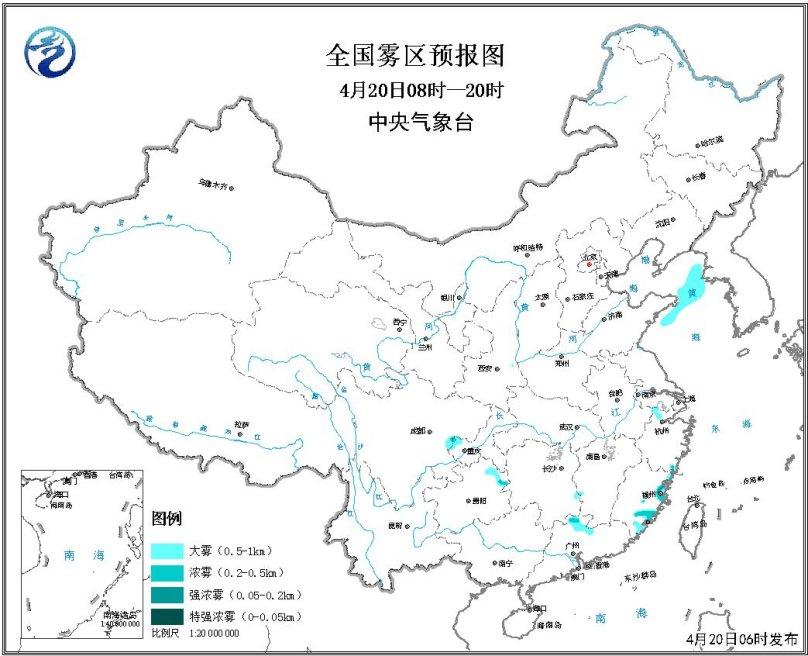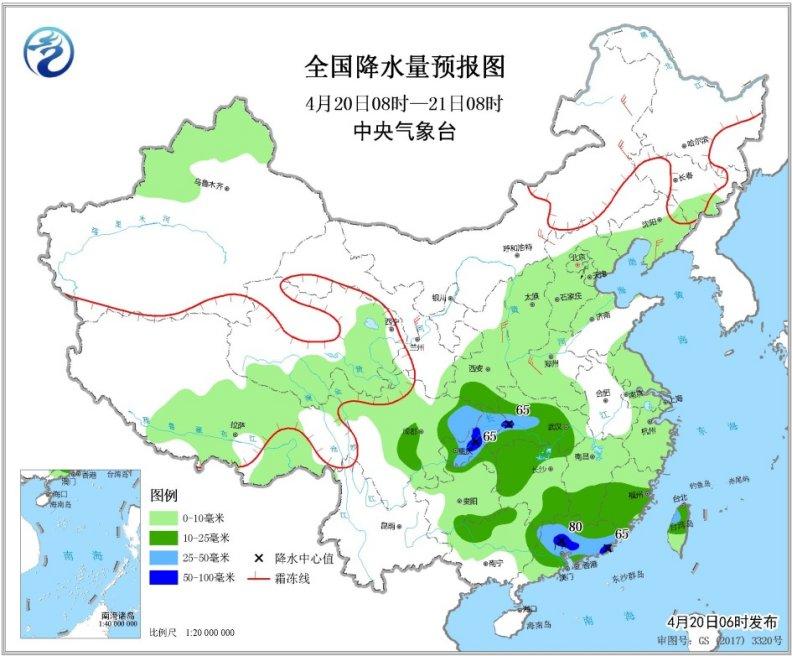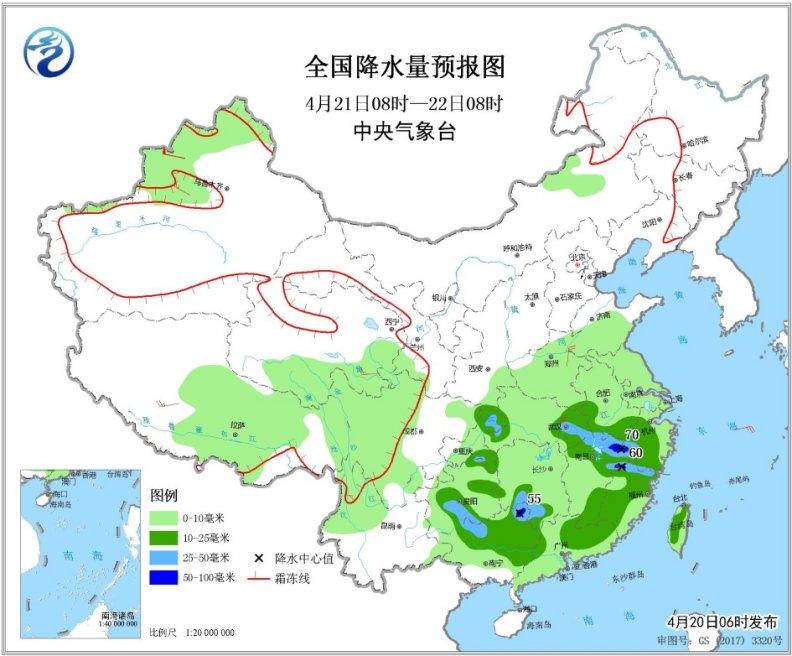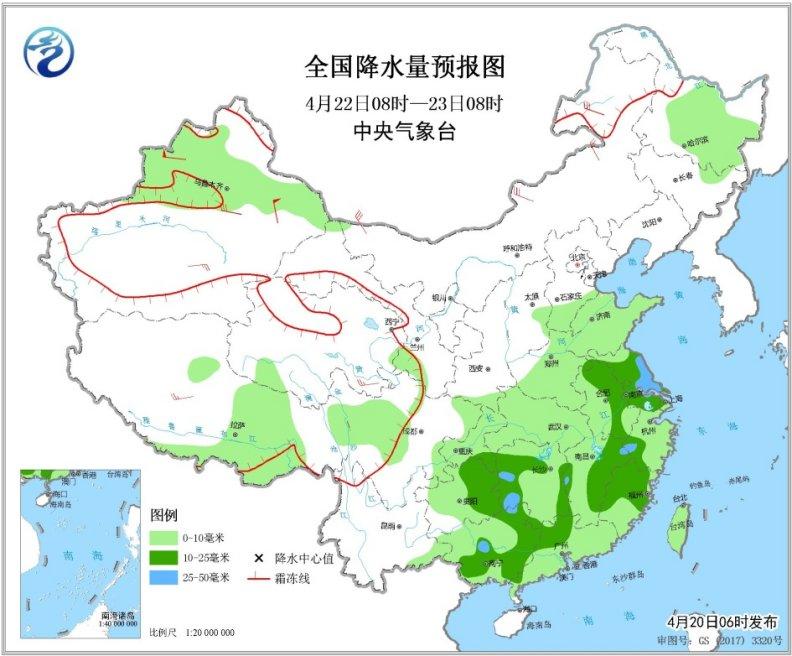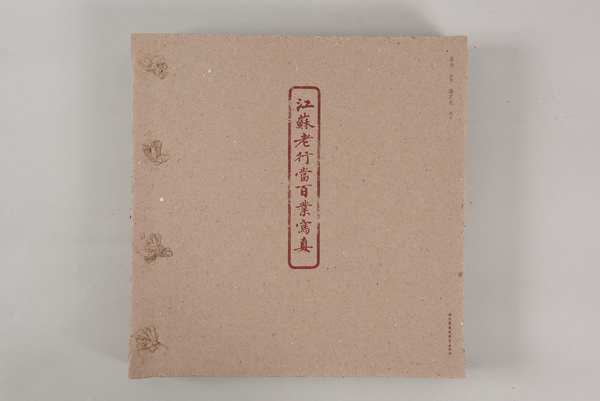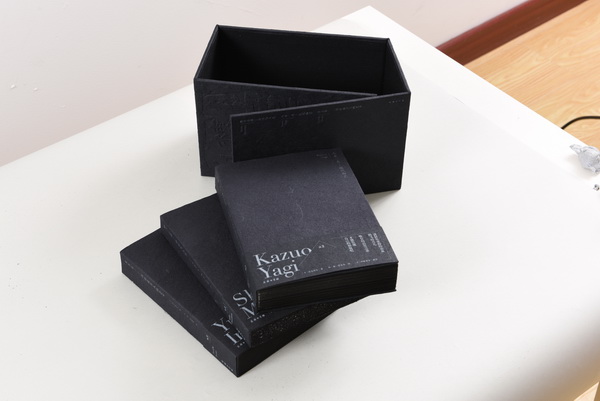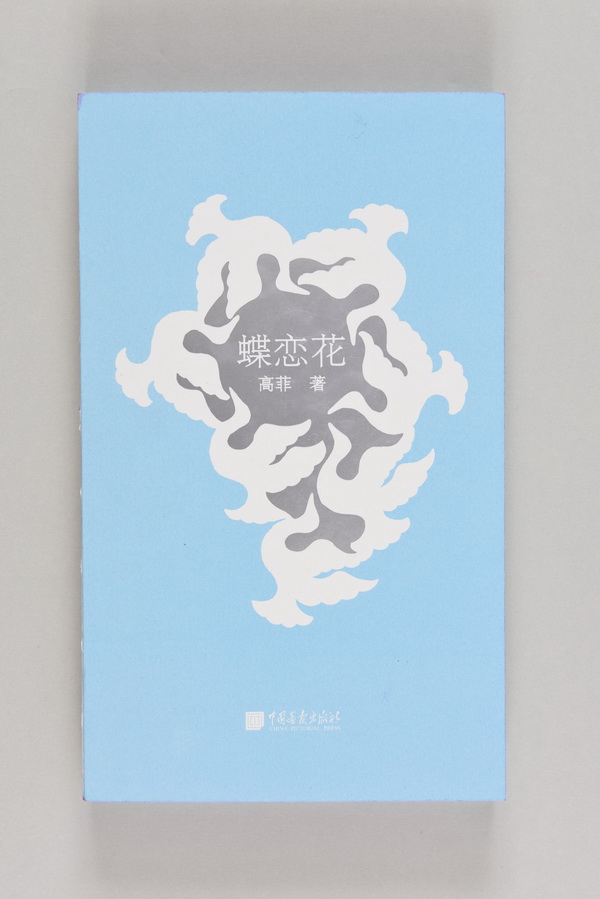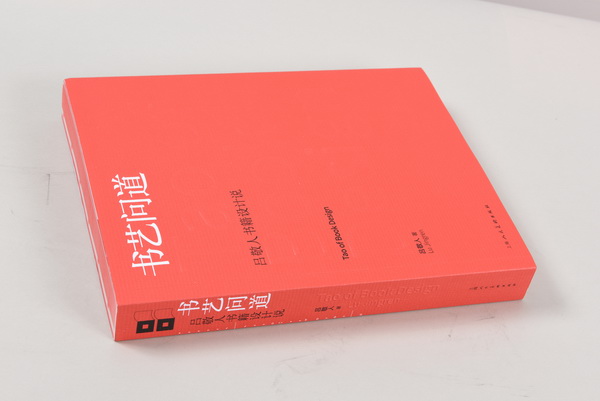() The business review of the Board of Directors in 2021 is as follows:
I. Discussion and analysis of business conditions
2021 is a significant year. We welcome the 100th anniversary of the founding of the Party, and at the same time start the first year of the implementation of the 14th Five-Year Plan. All Hongfa cadres and employees always adhere to Hongfa culture and characteristic management philosophy, unite as one, work hard, achieve impressive business results, and achieve a bright start in the 14 th Five-Year Plan.
In 2021, the company rose to the 6th place in the comprehensive ranking of economic indicators of electronic component enterprises in China, and ranked 89th in the top 100 enterprises with electronic information competitiveness, both of which were the best in history. The company’s market share in the global relay field has increased by nearly 3 percentage points compared with 2020, further consolidating the position of relay products as the first in the world.
(1) The Tenth Five-Year Plan of Hongfa Co., Ltd. and Development Plan for the Next Twenty Years was officially released and implemented, which pointed out the direction for the company’s long-term development.
In June, 2021, the Tenth Five-Year Plan of Hongfa Co., Ltd. and the Development Assumption for the Next Twenty Years (hereinafter referred to as "Planning and Assumption") was officially released. The development blueprint drawn by this plan and vision and the development vision for the next 20 years not only cover the overall planning of the company and the planning of each functional module, but also subdivide the planning of each business department and each enterprise, as well as the parts planning and mold planning related to the medium-and long-term production preparation of the enterprise, which together constitute an all-round and three-dimensional development strategic system of the company.
The planning and assumption firmly grasp the characteristics of Hongfa, and it is clear that we will continue to thoroughly implement the three development ideas of "crossing the threshold, expanding categories and improving efficiency", strictly follow the 16-character management policy of "unified planning, strengthening concentration, combining vertical and horizontal, and implementing in blocks", always adhere to the core business philosophy of "winning by quality" and the dual core of "quality and efficiency", and firmly advance along the development path of Hongfa’s characteristics. By the end of the "14th Five-Year Plan", the company will become a world-class brand in the relay industry, ranking first in the world, becoming one of the important switch product manufacturers in China, and stepping into the ranks of professional connector manufacturers; By the middle of the Tenth Five-Year Plan, the business scale will reach 20 billion yuan, making it a leading global enterprise with distinctive features.
Planning and assumption is the first five-year plan for the company to enter a new development stage. It is a plan with a new starting point and a new chapter, which will become an important action guide for the company’s future operation and management.
(2) Achieve rapid growth in business indicators and get off to a good start in the 14th Five-Year Plan.
(3) Adhere to the "dual core of quality and efficiency" and consolidate and enhance comprehensive advantages.
In 2021, the company continued to firmly adhere to the operating characteristics of "double cores of quality and efficiency", and strived to build core advantages in the fierce market competition by improving product quality and per capita production efficiency. Relay products continued to expand into high-end fields, further consolidating and expanding the leading edge.
1. The physical quality of products has been steadily improved at a higher level.
In 2021, the company organized and completed 77 Six Sigma projects, 697 QCC projects and 15 weekly failure improvement projects around the improvement of key product quality, and the proportion of production lines assessed by the "crossing the threshold" standard steadily increased to 90.1%, of which the proportion of middle and senior production lines reached 69%. The pass rate of weekly inspection is 95.1%, and the key defects of relay products have been steadily reduced to 1.9PPM. The quality of contactors, small circuit breakers, high and low voltage cabinets and three cabinets at the client side has obviously improved, and the market competitiveness has been continuously improved.
2. The investment in automatic production line is the highest in history.
In 2021, the company’s investment in technological transformation exceeded 1 billion yuan for the first time, and a total of 38 automated production lines were put into use, which was the year in which the company invested the most in automated production lines over the years.
During the reporting period, the company firmly adhered to the concept of "five sets in one" in the development of automatic production lines, and exerted the collaborative innovation ability of internal industrial chains, and the quality and speed of production line development were significantly improved. The average period from start-up and development to quality acceptance and mass production of automatic production line of general relay is shortened to 3-5 months, and the investment period of some automatic production lines is only about 2 months; A total of 10 automatic lines have been put into use for automobile relays, and the per capita output value of some automatic lines is planned to reach 2.5 million yuan. The investment in technical transformation of high-voltage DC relay, signal relay, industrial control relay and sealed relay has also promoted the product quality and production efficiency, and achieved good benefits.
3. Relay products have further expanded the high-end market, and new categories represented by switches have developed steadily.
In 2021, the company’s relay products were eye-catching in the high-end market with excellent performance in quality and excellent cost performance: General Relay became the most important supplier and reliable strategic partner of many high-end brands including Miller, (), Electrolux and Bosi, and its global market share increased by 3 percentage points; In the field of rail transit, it successfully won the bid for several projects of CRRC Group, installed the first standardized subway in China as the core component, and landed on Zhengzhou-Xuzhou line in June 2021, filling the gap of domestic core component rail transit relay; In the new energy vehicle market, we have established cooperative relations with mainstream new energy vehicle factories in the world, including high-end vehicle factories such as Tesla, Mercedes-Benz and BMW, and the global market share of high-voltage DC products has reached 36%; Photovoltaic relays keep up with the development trend of the industry, and their products have been recognized by benchmark customers such as Huawei and (), and their market share in high-end customers exceeds 50%.
Low-voltage electrical appliances are gradually on the right track, with annual market sales and per capita payment increasing by more than 20%. The product development is based on the principle of "laying a solid foundation and accumulating strength", and the products are built from the source in a down-to-earth manner. The product lines such as power control, power distribution and small interruption have initially established a platform-based universal series, and the key technologies have achieved remarkable results, and important breakthroughs have been made in the fields of customer customization and special subdivision. In 2021
On the basis of the smooth operation of the first small automatic production line, we will continue to push forward several automatic production line projects according to the requirements of "high quality and high standard", and the core competitiveness of enterprises is gradually taking shape.
(4) Insist on innovation-driven, and change the technological development from following to leading, providing a strong impetus for the "Fourteenth Five-Year Plan".
1. Many products are leading the world in technology.
In the field of home appliances and smart home market, following the technical trend of frequency conversion and current carrying, we have developed large current carrying products and low-power and miniaturized products with high surge resistance, and their performance and technical indicators are leading internationally.
In the emerging application fields of photovoltaic, wind power and energy storage market, we directly cooperate with leading enterprises such as Huawei to develop products, and the technical indicators lead the international market.
High-voltage DC relay products combine the extreme safety technical requirements of benchmark customers, overcome the extreme safety technical capabilities such as high short circuit resistance, high limit breaking and low contact resistance, and continuously consolidate the leading edge.
It is the first to develop the fifth generation signal relay in the world. Under the condition of maintaining the performance index, the product volume is reduced by more than 50% and the power consumption is reduced by 60%, leading the update iteration of signal relay technology.
2. Intellectual property work has gradually shifted from "focusing on evasion" to "taking the lead in protection".
In 2021, the company actively conducted risk investigation and patent analysis on 341 products, and consciously conducted investigation and rights protection on competitors’ patents, all of which achieved good results. In 2001, 376 domestic patent applications were completed, including 118 inventions, up 9.26% year-on-year, and 25 international patent applications, up 38.89% year-on-year. The authorization rate of invention patents is as high as 96.97%, and the authorization rate of utility model patents remains 100%, which has established effective intellectual property protection for leading products and technologies.
3. Demonstrate the leading edge in the field of standardization, and the international influence of the industry has been significantly enhanced.
In the field of international standardization, the company has 5 experts from IEC International Standards Committee, participated in the compilation, revision and opinion handling of 3 international standards throughout the year, and organized 70 international standards to solicit opinions and reply. At home, the company serves as the chairman of China Relay Standardization Committee, leading the formulation, approval and release of two national standards GB/T21711.1 and GB/T16608.1, leading the formulation of two national standards GB/T21711.2 and GB/T21711.2.1 on relay reliability, progressing steadily according to procedures, and newly reporting two national standards GB/T 21711. The company’s work in the field of relay professional standardization further consolidated the company’s leading position in the relay industry and significantly enhanced its international influence in the relay industry.
(5) Build a strong production capacity of molds and parts, and lay a solid foundation for the supply chain of products during the 14th Five-Year Plan.
In 2021, the company took the mold and front-end capacity building as a major strategy, systematically planned and comprehensively promoted, and further enhanced the overall strength of the industrial chain supply chain.
1. Make a systematic and overall plan for the capacity building of molds and parts.
In 2021, the company organized the formulation of Mould Management System, Medium-and Long-term Development Plan of Mould, and Tenth Five-Year Plan (Draft) for the former parts, systematically planned the production, technical transformation and site of the former parts, strengthened management, accelerated construction, and provided institutional guarantee for creating "good parts". Establish a statistical management mechanism for the internal matching ratio of key parts, and the internal matching ratio of various major parts such as stamping parts, injection molded parts, contacts and iron cores continues to rise steadily.
2. Focus on improving the level of R&D, design, processing and manufacturing of molds.
In 2021, the company’s mold center continued to strengthen the development capability of high-precision long-life molds, with the life of dies exceeding 100 million molds and the life of plastic molds exceeding 10 million molds, reaching the first-class level in the industry; Improve efficiency and shorten delivery time. The proportion of T1 days within 60 days reached 80%, the annual mold output increased by more than 50%, and the TEEP of 36 GA key equipment increased by 22.43%. Continue to increase investment in technological transformation, introduce CNC machining center production line, spark machine, high-speed machining center, OPS graphite discharge unit and other equipment to further enhance R&D and manufacturing capabilities. The MES project of mold is put into operation, which forms a platform of information flow synchronous exchange management of mold design, manufacturing and design change, realizes integrated manufacturing and systematic management of mold data with MES system as the core, and lays a solid foundation for building a systematic, automatic and intelligent mold manufacturing factory.
3. Strive to build a first-class component manufacturing base.
The manufacturing of parts and components starts from the research of basic theory, and many breakthroughs have been made in technical research. The highest punching speed can reach 1200 times/minute, the shortest injection cycle is 4.5 seconds, and the injection mold for pushing cards can reach up to 128 cavities. The qualified rates of injection parts, metal workpieces, contacts and iron cores in comprehensive batches reach 99.65%, 99.45%, 99.55% and 99.08% respectively, all reaching the advanced level in the industry.
Inherit the advantages and experience of relays, benchmark the world first-class, highlight the goal of "high quality, high speed, strong adaptability and high cost performance", and implement them in blocks according to the characteristics of new products, so as to build the independent supporting capacity of key components of new products. Actively introduce core production technology and equipment, and successively overcome key core technologies such as precision forming of high-voltage DC close-wound bobbin, which will help the development of new products.
(VI) Firmly implement the 16-character management policy of "unified planning, strengthened centralization, vertical and horizontal integration and block implementation", improve the management level of the company and ensure the smooth implementation of the "Tenth Five-Year Plan".
1. Strengthen performance appraisal under the guidance of planning to ensure the smooth implementation of the company’s strategic objectives.
In 2021, performance management will continue to focus on the guiding ideology of "taking strategy as a guide and constantly solving the bottleneck problem in development", focusing on the operating characteristics of "quality and efficiency" in terms of project and weight setting, and guiding enterprises to continuously build core competitiveness; In terms of goal setting, based on the "Tenth Five-Year Plan" and combined with the macroeconomic situation and competition pattern faced in 2021, the appropriate development goals are determined, and the completion situation is followed up in time through the combination of monthly statistics and quarterly analysis. At the end of the year, the business results of the enterprise are measured based on performance evaluation and the subsequent improvement direction is identified to ensure the smooth implementation of the company’s planning and strategy.
2. Informatization construction has been promoted to the deep water area, and the pace of digital transformation has been accelerated.
In 2021, the company stepped up its informatization construction to the deep water area. In addition to continuing to complete ERP, financial sharing and other projects as planned, it continued to implement three phases of projects in the sales field, and completed the comprehensive coverage of CRM marketing management system in domestic and foreign sales organizations. In the field of supply chain and production-marketing collaboration, taking Zhangzhou Hongfa and Xiamen Jinyue as the pilot, APS advanced planning and scheduling software was introduced to initially realize the supply-demand linkage between parts and finished products enterprises; Start S&OP pilot in automotive electronics to create conditions for establishing a visual and integrated supply chain management and decision-making system; In warehousing management, WMS platform at group level is introduced to lay the foundation for subsequent warehousing automation and information integration. The business index statistics of all production enterprises in the company are systematic and automatic, and digital information is increasingly becoming the core strategic resource of the company and plays an important role in business decision-making.
3. Further strengthen the unified management of marketing work.
In 2021, the company intensified the unified market planning, integrated industry solutions with the energy industry as a pilot, explored the unified promotion mode of the industry, organized centralized research on key customers in the wind energy and photovoltaic industries, and completed the marketing planning and promotion of nine products (series) such as electronic modules and intelligent circuit breakers; Establish a new category promotion department to help the market development of new categories of products; Establish a global account manager system, formulate a global account strategy, and improve the global account management improvement ideas; Continuously improve the information sharing and cooperation mechanism between sales systems, effectively coordinate the conflicts of customer resources between channels, realize the unified platform for orders, unified data drainage, unified channels for external publicity, unified management of customs affairs and sales expenses, and ensure the smooth operation of various businesses.
(VII) Promoting the construction of the three major bases as a whole, and creating conditions for the capacity expansion in the 14th Five-Year Plan.
At the Xiamen-Zhangzhou base, the second phase of Zhangzhou Hongfa project was completed in May 2021 and successfully relocated and put into production, and the third phase of the project with a construction area of 150,000 square meters was officially launched; The second phase of Haicang Industrial Park, with a construction area of 62,000 square meters, completed preparatory work such as project establishment and scheme design; The electroplating expansion project with a building area of 19,000 square meters in Sunban Factory was successfully completed and will be put into production in early 2022.
In the eastern base, the electroplating workshop was put into use in early 2021, and the electroplating internal service of the eastern base began to be realized; Hongzhou New Energy moved into a new factory building and put into production in October 2021. At the same time, various supporting service facilities in the park were gradually improved, and the whole base was initially formed, which created conditions for subsequent capacity expansion.
In the western base, in March 2021, the signing ceremony of the investment agreement for the construction of the "14 th Five-Year Plan" project of Hongfa Western Intelligent Manufacturing Industrial Park was successfully held, and the output value of the project will exceed 2.4 billion yuan after completion. In September 2021, the third phase of Sichuan Hongfa Project was officially started. The project has a construction area of 44,000 square meters, and two modern production plants will be built. It is expected that the renovation will be partially completed and put into production in 2023.
The rapid progress of the construction of the three bases will provide sufficient plant resources for the company to achieve the "14 th Five-Year Plan" and "create another 10 billion".
(8) 2 billion convertible bonds were successfully issued, which helped accelerate the development of the 14 th Five-Year Plan.
In September 2021, the company’s project of issuing convertible bonds was unconditionally approved, and it was successfully issued and listed in November, successfully raising 2 billion yuan, which provided a strong financial guarantee for the company’s continuous large-scale and high-quality investment during the 14 th Five-Year Plan period.
(9) Major shortcomings and challenges in 2021.
In 2021, while achieving good business results, we must also be soberly aware of the shortcomings and challenges we face: the development of new categories of products is still relatively slow; The influence of Hongfa brand does not match the overall strength of the company; There are still obvious shortcomings in the overall development of the company, especially in the eastern base enterprises. Affected by various aspects of the epidemic, the pace of globalization has been hindered; The internal synergy of the company has not been fully exerted, and the organizational structure needs to be further optimized; Cadres’ ideological concept, ability and quality need to be improved continuously, and the construction of talent team has a long way to go. These problems need to be solved in the future work.
In 2022, all Hongfa employees will continue to adhere to the company’s "14th Five-Year Plan" under the guidance of the three development ideas and the 16-character management policy, vigorously inherit and carry forward Hongfa’s corporate culture, strengthen their beliefs, be determined to innovate, and strive to do all the specific work to promote the company’s sustained and good development!
Ii. the industry in which the company is located during the reporting period.
The company’s main product relay is an electronic control device, which has a control system (also called input loop) and a controlled system (also called output loop). It is usually used in automatic control circuits, and it is actually an "automatic switch" that uses a smaller current to control a larger current. Therefore, it plays the role of automatic adjustment, safety protection and conversion circuit in the circuit. When the input quantity (such as voltage and current) reaches the specified value, the controlled output circuit is turned on or off. It has the advantages of fast action, stable work, long service life and small size. Widely used in power protection, automation, sports, remote control, measurement and communication devices.
According to the 2021 edition of China Electromagnetic Relay Market Competition Research Report issued by Zhiduoxing Consultant, the global economic situation will improve in 2021, and the relay market will rebound to a certain extent, reaching 58.95 billion yuan in 2025, with an average growth rate of about 8.5% in the five years from 2020 to 2025. According to the data of Zhiduoxing Consultant, the global demand for electromagnetic relays will be about 10.35 billion in 2021, and 11.94 billion in 2025, with an average growth rate of about 5.2% in the five years from 2020 to 2025.
With the strong growth of smart home, industrial automation, photovoltaic field, global smart meters, smart cars and the rapid development of new energy vehicles, with the arrival of the 5G era, the relay market will usher in a new round of development. The global manufacturers of electromagnetic relays are mainly concentrated in China, Japan, Europe and America, among which Hongfa shares rank first in the world in market share, while OMRON and Tyco electricity rank second and third respectively.
Iii. Business of the Company during the reporting period
(a) the main business, main products and their uses, business model.
Xiamen Hongfa () Co., Ltd., a holding subsidiary of the company, is mainly engaged in the production, R&D and sales of relays and electrical products. The main products include relays and electrical products, among which electrical products include low-voltage appliances, high-voltage and low-voltage complete sets of equipment and other categories. Relays are the company’s main products, mainly including power relays, automobile relays, signal relays, industrial relays, power relays, new energy relays and other categories, with more than 160 series and more than 40,000 common specifications, with an annual production capacity of over 30.
The company’s products have been certified by UL&CUL in the United States, VDE and TV in Germany, CQC in China, etc., and are widely used in household appliances, smart homes, smart grids, new energy, building power distribution, automobile industry, rail transit, industrial control, security, fire protection and other fields.
After years of development, the company has more than 30 manufacturing enterprises, established three R&D and production bases in Xiamen, Zhangzhou, East and West, and seven core business divisions, with a workshop area of over 1 million square meters, and has formed a relatively complete industrial chain of relays and electrical products, covering the design and manufacture of production equipment, parts production, finished product production and product sales. The internal industrial chain is as shown in the figure:
1. Purchasing mode
The main materials consumed by the company include copper, iron, silver wire, enameled wire and engineering plastics. After years of development, the company has established a set of strict procurement management system and supplier management norms, and clearly stipulated and strictly implemented the responsibilities and authority of procurement management, procurement process, supplier selection, procurement price approval, procurement payment and inventory storage management. The specific procurement process is as follows:
2. Production mode
The relay assembly of the company is in a clean workshop with a class of 100,000 or above, and it is equipped with a negative pressure system to effectively control foreign bodies. The assembly adopts automatic production mode, and has the ability to independently develop first-class relay automatic assembly technology and equipment, including automatic winding, automatic riveting of contact with materials, automatic insertion, automatic welding, etc. In product quality control, online detection technologies such as image system and vacuum leak detection are used, and functions such as online real-time adjustment and defective product sorting are configured, which greatly improves the consistency and stability of product assembly and ensures the physical quality and production efficiency of products.
3. Sales model
(1) Sales management mode
According to the differences of different industries, different regions and target customer groups, the company adopts the sales management mode of combining direct selling and distribution.
The marketing channels of the company are divided into international and domestic markets, as follows:
① International market
International market refers to importers and exporters in China’s overseas market and domestic market, and customers with foreign currency as the settlement unit. The marketing center of the headquarters is responsible for the overall market planning, organization and coordination. The international market can be divided into:
(2) Pricing method
The overall pricing strategy of the company’s products is to refer to market conditions and cost additive process. When determining the product pricing, the company refers to the market price and adds a certain percentage of profits on the basis of raw materials, processing costs and labor costs to determine the final quotation of the product. The cost of the company’s products will change due to changes in material prices, exchange rates and labor costs, and the company will recalculate the latest reserve price regularly.
(2) Market position and competitive advantage of products
The development of relay industry is relatively mature, and the market competition is relatively full. The main producing countries include China, Japanese, German and other countries. The company has more than 30 years of experience in relay research and development and manufacturing, and is one of the major relay manufacturers in the world. According to the "2021 Edition China Electromagnetic Relay Market Competition Research Report" issued by Zhiduoxing Consultant, the company’s global electromagnetic relay market share ranks first in the world.
According to the 30th-34th Top 100 ranking of electronic component enterprises judged by China Electronic Component Industry Association, there are 7 relay manufacturers on the list, including Acer Power Generation, Guizhou Aerospace, (), Ningbo Tianbo, Huigang Holdings, Ningbo Ford and Shanghai Omron.
Among them, macro power generation is in the first place in the relay industry, a sub-industry of electronic components industry.
Iv. analysis of core competitiveness during the reporting period
In the long-term development process, the company has gradually formed a unique core competitiveness:
1. Excellent corporate culture
After more than 30 years of development and precipitation, the company has formed a corporate culture system with Hongfa characteristics. The system includes seven core concepts (vision, mission, values, etc.) and six management ideas (quality and efficiency are the core, etc.). The company adheres to the enterprise spirit of "continuous progress and never satisfaction"; It has established the vision of "creating an international brand, building a century-old prosperity", the corporate mission of "representing the national relay industry to win a place in the world" and the core values of "jointly promoting the continuous development of enterprises, making contributions to society and shareholders, and striving to seek better and better interests for employees themselves". Always adhere to the business policy of "market-oriented, quality wins"; The quality policy of "pursuing perfect quality to provide customers with satisfactory products and services" and the code of conduct of "honesty, law-abiding, civilization and dedication".
2. High-level technical R&D team
The company has the first national-level enterprise technology center, academician workstation, postdoctoral workstation and the largest relay testing center in Asia in the domestic relay industry, focusing on improving quality and efficiency and customizing personalized solutions for customers. The company became the first enterprise in the relay industry to preside over the formulation of national standards. By the end of December 2021, the company had 1,528 valid patents. Relying on the strong technical resource advantages in the relay industry, the company’s technical status in the industry is improving day by day, and it has successively won the honors of "National Technology Innovation Demonstration Enterprise", "National Manufacturing Individual Champion Demonstration Enterprise", "Industrial Product Green Design Demonstration Enterprise" and "National Technology Innovation Engineering Innovative Enterprise".
3, advanced mold design, manufacturing and precision parts manufacturing capabilities.
Hongfa firmly believes that "good products are made of good parts, good parts depend on good molds, and good molds need good design and equipment". After decades of precipitation and accumulation, it has become a complete industrial chain that deeply integrates the design and manufacture of molds, precision parts and automated production lines. In terms of mold design, manufacturing and precision parts manufacturing capabilities, the company has a strong self-supporting ability of parts, equipped with the world’s top parts production equipment. The precision of Hongfa mold can reach 1μ, and the industry-leading mold design and manufacturing ability shortens the product development cycle and ensures the product quality.
4, advanced relay automation equipment design and manufacturing capabilities.
In terms of the design and manufacturing capacity of relay automation equipment, the company is one of the earliest enterprises in China that specializes in designing, developing and producing special automation equipment and automation production lines for relay industry. The developed relay assembly production line and the equipment level of the previous part have reached the world-class level. The rising degree of automation improves the company’s per capita production efficiency and ensures the consistency and stability of product quality.
5. Advanced and complete product laboratory
The company has the largest relay testing center with the most complete facilities in China relay industry, and has set up "three core product testing laboratories" and "four public service laboratories". Establish a laboratory quality assurance system according to the ISO/IEC17025 accreditation criteria, have the independent development ability of non-standard testing systems, meet the non-standard testing needs of different customers, participate in the formulation of international standards such as IEC61810-2/-2-1 and IEC61810-10, and lead the formulation of China standards such as GB/T21711.7 and GB/T16608.50-55. At the same time, it implements more than 10 international and domestic standards, such as EN61810 and UL508. In 2007, the company signed the preferred partner agreement with VDE, which was the first in the world in terms of components. The company has been recognized by VDE as the world’s first relay laboratory for electric meters, and has the laboratory qualification recognized by Shanghai General Motors (GP-10). The company’s chemical analysis laboratory has been recognized by CNAS laboratory for expansion, which can provide customers with accurate, reliable and credible ROHS compliance testing data and reports.
6. Always pursue to provide customers with satisfactory products and services with perfect quality.
The company always insists on "winning by quality" and pursues to provide customers with satisfactory products and services with perfect quality. It has built a unique total quality management model and integrated management system. Based on the "five-in-one" new product development quality management, robust process control, "quality first" supplier quality management, customer-oriented quality service and "pyramid" continuous improvement mechanism, the quality management cycle is realized and the whole production process of each product is strictly carried out.
7. Industry-leading human resources advantages
Under the guidance of the concept of "people-oriented, cultivating top-notch talents in the industry", the company has gathered a group of professionals with certain authority and experience in product research and development, production, management and marketing through self-cultivation as the mainstay, which has laid a solid talent foundation for the further development of the company’s business. The core technicians of the company’s product research and development department have many years of experience in the industry. The company adheres to the guidance of high-end talents and promotes the improvement of technological innovation ability. The company’s main management team has rich experience in relay industry operation and management, focusing on building a strong brand in the industry and continuously enhancing the company’s core competitiveness.
8. Brand advantage
After more than 30 years of development, the company has become the world’s largest relay manufacturer, trusted by customers. According to the list of "Top 100 Electronic Components Enterprises in China in 2021 (the 34th)" issued by China Electronic Components Industry Association, the company ranks sixth and first in the relay industry.
The company has a high market reputation and brand awareness, and has obvious competitive advantages in network layout, industrial integration, customer and supplier management.
V. Main operations during the reporting period
During the reporting period of 2021, the company realized an operating income of 10,022,657,500 yuan, an increase of 28.18% over the same period of last year; The net profit attributable to shareholders of listed companies was 1,062,555,500 yuan, an increase of 27.69% over the same period of last year; The net profit attributable to shareholders of listed companies after deducting non-recurring gains and losses was 922,540,300 yuan, an increase of 32.98% over the same period of last year; Achieve basic earnings per share of 1.43 yuan.
VI. The Company’s Discussion and Analysis on the Company’s Future Development
(A) the industry pattern and trends
As one of the most important basic components, relay is a necessary and core electronic control basic component in the whole circuit control system, which is widely used in the fields of home appliances, industrial control, automobiles, communications, electricity, energy, security, aerospace and so on, and its main function is to realize "automatic and remote" control. Among these fields, household appliances, automobiles and industrial control, as traditional industries, have always been the fields with the largest amount of relays. Although the downward pressure on the global economy has increased under the influence of the epidemic during the reporting period, individual fields, such as electric power (especially smart grid), security monitoring, smart home and new energy (especially photovoltaic power generation and new energy vehicles), as emerging industries, are driven by industrial policies in China and the world, with strong development momentum. China is still the main production base of relays, accounting for about 50% of the global total output. There are many manufacturers, but there are few manufacturers with a certain scale, the industry concentration is not high, and the market competition is fierce.
The company’s comprehensive economic indicators have been in the leading position in domestic peer enterprises for many years. At the end of the reporting period, the company’s overall sales revenue was 10.023 billion yuan, up 28.18% year-on-year. The company produced more than 3 billion relays, low-voltage electrical appliances and other products throughout the year, and its main relay products have steadily increased their market share in the global market. In 2021, the company’s products were eye-catching in the high-end market: the market share of general relays in high-end smart home appliances was further consolidated and expanded, becoming the most important supplier and reliable strategic partner of many global high-end home appliance brands; As the core component, the sealed electromagnetic relay is installed in China’s first standardized subway train, Rio Tinto’s rail transit market, which fills the gap in domestic rail transit relays; High-voltage DC relay has grown rapidly, and has established business cooperation relations with mainstream new energy vehicle manufacturers around the world, becoming the world’s major manufacturer of high-voltage DC relay; Photovoltaic new energy products keep up with the rapid development of the industry, and the market share of high-end customers has increased by nearly 60%, and the overall market share has increased to 57%. The deep expansion of the high-end market has pushed the company to stride forward on the road of high-quality development.
During the reporting period, many projects of the company were carried out smoothly and won many important honors: the "14 th Five-Year Plan" project of Hongfa Western Intelligent Industrial Park was launched; The company’s national intelligence creation new model project passed the acceptance; In China, the comprehensive ranking of economic indicators of electronic component enterprises rose to the sixth place, the best ranking in history, and the ranking of the top 100 enterprises with electronic information competitiveness and the top 500 listed enterprises in China has also been continuously improved, and at the same time, it has once again won the "China Brand Value List".
In the future, under the guidance of the three development ideas and the 16-character management policy, we will always adhere to the principle of "winning by quality", vigorously inherit and carry forward Hongfa culture, strengthen our faith, be determined to innovate, keep forging ahead, never be satisfied, work hard, overcome the risk challenges on the way forward, enhance our development momentum, plant our development advantages, and constantly push Hongfa career to a new height.
(II) Company development strategy
The company’s development strategy is to inherit and carry forward Hongfa’s characteristic culture and business philosophy, adhere to the business policy of "market-oriented, winning by quality", thoroughly implement the three development ideas of "crossing the threshold, expanding categories and improving efficiency", strictly follow the 16-character management policy of "unified planning, strengthening concentration, integrating vertically and horizontally, and implementing in blocks", and firmly grasp the core business philosophy of "winning by quality" and "quality and quality" Enhance the leading ability of technological innovation, build an independent and controllable industrial chain system, continuously build automated and intelligent manufacturing factories, enhance the core competitiveness of enterprises, carry forward Hongfa brand, and promote the high-quality development of enterprises.
Specifically, it is proposed to implement the company’s development strategy through the following aspects:
(1) Strengthen market operation and expand market share.
(2) Accelerate "expanding categories" and strengthen technical guidance.
(3) Coordinate production layout and improve operation management.
(4) Adhere to "winning by quality" and continue to "cross the threshold"
(5) Insist on technical innovation to build enterprise technical strength.
(6) Build an autonomous and controllable system to build core competitive strength.
(7) Grasp the construction of talents and ensure the development of the echelon.
(8) Promote the development of informatization and realize digital growth.
(9) Improve the base construction and ensure the development space.
(10) Centralized financial control and fine value creation.
(3) Business plan
In 2022, under the guidance of the three development ideas and the 16-character management policy, the company will always adhere to the principle of "winning by quality", vigorously inherit and carry forward Hongfa culture, strengthen its belief and be determined to innovate, and focus on the following work:
(1) Firmly implement the strategy of "expanding categories", use the successful experience of developing relays to promote the development of new categories of products, and cultivate new growth points of the company in the future as soon as possible.
(2) continue to build the strength of parts and molds, especially strengthen the research and development of new products, new processes and characteristic processes, and build core competitiveness.
(3) Continue to pay close attention to the "short board" work, help short board enterprises in human resources protection, management improvement and technology docking, and promote the rapid development of the eastern base.
(4) Standardize the use of raised funds, adhere to high-quality and large-scale investment, promote the construction of production bases, further enhance the strength of enterprises, and lay the foundation for the rapid development of the company in the next stage.
(5) Pay attention to the development of macroeconomic situation, organize functional modules such as production, supply and marketing to actively respond to external risks and challenges, and ensure the smooth progress of production and operation.
(6) Vigorously enhance the brand awareness of Hongfa, win the brand reputation by continuously improving the product quality, and at the same time strengthen the marketing propaganda, so that enhancing the brand awareness of Hongfa becomes a new meaning of the strategy of "crossing the threshold".
(7) Summarize Hongfa’s development experience, carry forward Hongfa’s characteristic culture, complete the compilation of Hongfa’s management experience series, and inherit and practice the unified Hongfa’s characteristic management model.
(8) Strengthen the construction of talent team, especially accelerate the construction of senior technical talents and excellent management talents, and provide talent guarantee for the company’s new round of rapid development.
(9) Focus on asset management and benefit improvement, further refine enterprise cost control, build the company’s financial knowledge center, output high-quality financial information and provide better services for the company’s strategic implementation.
(4) Possible risks
I. Operational risks
The company’s main products cover relays, low-voltage electrical appliances, high-voltage and low-voltage complete sets of equipment and other categories, and are applied to household appliances, smart homes, automobile industry, smart grid, industrial control, new energy and other fields. If macroeconomic fluctuations, policy adjustments and other factors affect the prosperity of downstream industries or downstream market demand, it may adversely affect the company’s operating performance.
Since 2018, trade frictions between China and the United States have been constant. The US government has successively issued three batches of tariff increase lists, in which 25% tariffs are imposed on goods worth $34 billion, $16 billion and $200 billion exported from China to the United States, and relay products are also included in the tariff increase list. Although at present, the products directly sold by the company to the United States account for a relatively small proportion, which has little impact on the company, if the trade friction between China and the United States is further aggravated or there is trade friction between China and other economies in the future, barriers will be set up in terms of trade policies and tariffs, which may have an adverse impact on the company’s operating performance, profitability and market development.
The main raw materials of relay products include copper, silver, enameled wire, engineering plastics, etc. The prices of the main raw materials are affected by the fluctuation of the international market of bulk commodities, which directly affects the product profits and the company’s working capital. If the price of the company’s main raw materials fluctuates violently in the future, and the company cannot transfer the negative impact of the price increase of raw materials to downstream enterprises by raising the sales price of products, it will have an adverse impact on the company’s operating performance.
Second, the brain drain risk
Technicians are very important for the long-term development of relay manufacturers. At present, the high-end relay with high technology content and large profit margin has become the development direction of the industry. Whether it can occupy the high-end market is the key for relay manufacturers to achieve sustainable development. The research and development of high-end relays requires specialized technicians, complete professional knowledge and wide knowledge of other majors, and it takes years of training and practice to truly design and develop new products independently. At the same time, a large number of key technology positions on the production line also need experienced skilled workers to be competent. Therefore, professionals are more important in the relay industry. If brain drain occurs, enterprises will face related losses. The core management and technical backbone of the company hold the company’s equity through qualified investment, and their personal interests can be consistent with the company’s development. Through this shareholding method of management and backbone personnel, the core personnel of Acer Power Generation can be kept relatively stable.
Third, technical risks
The Technology Center is the core of the issuer’s technological innovation system, and undertakes major research tasks such as product development and design, process design and verification, product performance testing and analysis, mold development and design and manufacturing, automatic production line equipment, test instrument development and design, etc. R&D investment ensures that the company’s products have excellent market competitiveness. If the company can’t continue to invest in R&D or technological innovation in the future, the products will not meet the needs of customers and the requirements of industry changes, and the market competitiveness will decline, thus affecting the company’s profitability.
Fourth, financial risks
Overseas income accounts for a relatively high proportion of the company’s main business income. The company’s overseas business is mainly settled in foreign currency. If the RMB exchange rate changes greatly, it will cause fluctuations in the balance of the company’s foreign currency monetary assets, and foreign exchange receipts and payments will generate large exchange gains and losses, which will further affect the company’s operating performance. At the same time, the fluctuation of exchange rate may also affect the price of products in overseas markets and face the risk of declining market competitiveness. The company has continuously summarized and improved the exchange rate risk management and control methods suitable for its own needs, locked the exchange rate in time through the analysis of the exchange rate market and operating income, and established a set of foreign exchange management methods and processes. Under the premise of comprehensively considering market liquidity and management costs, it actively pays attention to monetary policy and exchange rate trends, selects the timing of foreign exchange locking and settlement in a timely manner, and rationally uses financial instruments to reduce the impact of exchange rate fluctuations on enterprises and avoid exchange rate risks.
V. Policy risks
Electronic components industry is the basic support of electronic information industry, and its development is strongly supported and encouraged by national policies. In recent years, the Ministry of Industry and Information Technology, the National Development and Reform Commission and other departments have successively issued a number of policies to encourage and promote the rapid development of the electronic information industry, such as the Information Industry Development Guide, the Special Action Plan for Improving the Design Capability of Manufacturing Industry (2019-2022) and the Basic Electronic Components Industry Development Action Plan (2021-2023). In the future, if the relevant policies of the country on electronic components industry or electronic information industry change, it may lead to certain adverse effects on the company’s operating performance.
VI. Risks related to the issuance of this convertible bond
(A) principal and interest payment risk
During the duration of the convertible bonds, the issuer shall pay interest on the unconverted convertible bonds and pay the principal at maturity. In addition, when the convertible bonds trigger the resale conditions, if the investors put forward the resale, the issuer still needs to honor the resale proposed by the investors, and will face certain cash expenditure pressure in a short time. The convertible bonds issued this time did not provide guarantee. Therefore, if the issuer’s business activities fail to achieve the expected return due to uncontrollable factors such as national policies, regulations, industries and markets in the future, it may affect the issuer’s timely and full payment of the principal and interest of convertible bonds and the acceptance ability of investors when they sell back.
(2) The risk of failure to convert convertible bonds into shares at maturity
The stock price is not only influenced by the issuer’s profit level and development prospect, but also by the national macroeconomic situation, political and economic policies, investors’ investment preferences, expected returns of investment projects and other factors. If the convertible bonds issued this time fail to be converted due to the sluggish stock price trend of the issuer or the investment preference of the holders of the convertible bonds, the issuer shall pay the principal and interest for the convertible bonds that have not been converted, which will correspondingly increase the financial cost burden and financial pressure of the company. In addition, during the existence of the convertible bonds, if the convertible bonds are redeemed, the company will face certain financial pressure.
(C) the risk of reducing the conversion value of convertible bonds
The issuer’s stock price trend is influenced by many factors, such as operating results, macroeconomic situation, industry policies, and the overall situation of the stock market. After the issuance of the convertible bonds, the issuer’s share price may continue to be lower than the conversion price of the convertible bonds, so the conversion value of the convertible bonds may decrease, and the interests of the holders of the convertible bonds may be greatly adversely affected. This issuance has set the downward revision clause of the issuer’s share conversion price. If the issuer fails to revise the conversion price downward in time, or even if the conversion price is revised downward, the stock price is still lower than the conversion price, which may still lead to the reduction of the conversion value of the convertible bonds issued this time, and the interests of the holders of convertible bonds may be greatly adversely affected.
(D) Risks related to downward revision of the conversion price
1. Risk of failure to implement the downward revision clause of conversion price.
During the duration of the convertible bonds issued this time, when the closing price of the company’s shares is lower than 90% of the current conversion price for at least 15 trading days in any continuous 30 trading days, the board of directors of the company has the right to propose a downward revision plan for the conversion price and submit it to the shareholders’ meeting for deliberation and voting. This plan can only be implemented if it is approved by more than two-thirds of the voting rights held by shareholders attending the meeting.
Under the condition of meeting the downward revision conditions of convertible bonds’ conversion price, the issuer’s board of directors may still not propose the downward revision plan of conversion price based on multiple considerations such as the company’s actual situation, stock price trend and market factors; Or the downward revision plan of the conversion price proposed by the issuer’s board of directors has not been reviewed and approved by the shareholders’ meeting. Therefore, the holders of convertible bonds may face the risk that the downward revision of the conversion price will not be implemented during the duration.
2. Risk of downward revision of the conversion price with uncertain range.
During the existence of the issuer’s convertible bonds, even if the issuer revises the conversion price according to the downward revision clause, the revised conversion price shall not be lower than the higher average price of the company’s shares in the 20 trading days before the shareholders’ meeting to consider the proposal on the conversion price revision scheme and the average price of the previous trading day, so the correction range of the conversion price is limited to some extent, and there is a risk of uncertainty. Moreover, if the stock price continues to fall after the correction and the future stock price continues to be lower than the conversion price after the downward correction, the conversion value of the convertible bonds will undergo major adverse changes, which may lead to the risk that the convertible bonds will be sold back or cannot be converted during the conversion period.
3. The downward revision of the conversion price leads to the risk of the company’s share capital dilution.
During the duration of the convertible bonds, if the issuer’s shares trigger the downward revision of the conversion price, the conversion price of the convertible bonds issued this time will be adjusted downward. Under the condition of the same conversion scale, the number of shares converted by the issuer will increase accordingly, which will lead to the expansion of the dilution of the share capital. Therefore, during the duration, the issuer may face the risk of increasing the dilution degree of the share capital due to the implementation of the downward revision clause of the conversion price.
(V) Risk of price fluctuation of convertible bonds
Convertible bonds, as derivative financial products, have the dual characteristics of stocks and bonds. The secondary market price of convertible bonds is influenced by many factors, such as market interest rate level, coupon rate, remaining years, conversion price, stock price of listed companies, redemption terms and resale terms, investors’ psychological expectations, etc. The price fluctuation situation is more complicated, and even there may be abnormal fluctuations or deviations from their investment value, which may make investors face certain investment risks.
(VI) Liquidity risk
The trading activity of the securities trading market is influenced by the macroeconomic environment, the distribution of investors, investors’ willingness to trade and other factors. The issuer cannot guarantee that the holders of the convertible bonds can trade their bonds in full and at any time after listing on the Shanghai Stock Exchange. Therefore, after purchasing this convertible bond, investors may face the liquidity risk that they can’t sell the amount they want to sell in full at a certain price because the bond is inactive after listing.
(7) Risk of credit rating change
After the new century credit rating, the issuer’s main credit rating is AA, and the credit rating of this convertible bond is AA. During the validity period of the credit rating of this convertible bond or the duration of this convertible bond, the tracking rating will be conducted at least once a year in the new century, and the issuer cannot guarantee that its main credit rating and the credit rating of this convertible bond will not change negatively during the validity period of the credit rating or the duration of the bond. If the credit rating agency lowers the issuer’s main credit rating and/or the credit rating of this convertible bond, it may have a certain impact on the interests of bondholders.
Eight, the risk of COVID-19 epidemic.
In recent years, novel coronavirus broke out one after another in various regions of the world, which had a great impact on the world macro-economy. Subject to quarantine measures, traffic control and other epidemic prevention and control measures, the company’s procurement, production and sales are affected to some extent in the short term. Although the domestic COVID-19 epidemic has been effectively controlled, the issuer has resumed normal production and operation, and all work has been carried out in an orderly manner, if the COVID-19 epidemic recurs in China or continues to spread around the world for a long time, it may still have a certain degree of adverse impact on the company’s strategic implementation, production and operation, and performance.
The above possible risks have not changed much from the risk factors suggested in the previous year (or prospectus).

